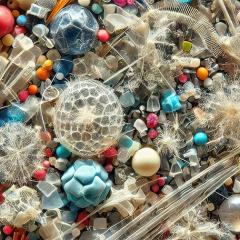Outside the Safe Operating Space: Planetary Limits of Plastics and Chemicals
The Planetary Boundaries identify the nine processes that regulate the stability and resilience of the Earth system, quantifying the planetary boundaries within which humanity can continue to develop and thrive into the future. In a recent publication, a team of researchers addressed the Novel Entities boundary. During this talk, Carney Almroth will address how the research team developed a framework for addressing the novel entities and describe the control variables that were identified along the linear life cycle of these substances and materials. A weight of evidence approach was used to determined that we are exceeding global limits on pollution that will keep the planet and its inhabitants safe. They researchers document concerns for planetary safety due to over-production and release of human made substances and natural materials that are mobilized by human activities, including plastics, synthetic chemicals such as pesticides, industrial chemicals, and chemicals used in consumer products. Some of these pollutants can be extremely persistent and thus are found globally, from the Arctic to Antarctic and all places in between, with evidence of negative impacts on Earth systems, including biodiversity and biogeochemical cycles.
Dr. Bethanie Carney Almroth is a professor of ecotoxicology. She has a background in fish physiology and ecotoxicology and works in interdisciplinary groups addressing environmental pollution. Her recent research has focused on the sources and fate of plastics and microplastics in the environment, chemicals in plastic materials, and effects of exposure, focusing on mechanisms driving effects of exposure. Her collaborative work aims to identify appropriate solutions to large-scale environmental problems. She teaches undergraduate and graduate courses in environmental science, animal physiology, aquatic ecotoxicology and biochemical toxicity and leads a research group with PhD candidates and post docs. Dr. Carney Almroth is also an active science communicator, interested in inspiring children and young students to develop interests in science and the environment. She also advises decision makers on various levels, from local to national to international authorities.

